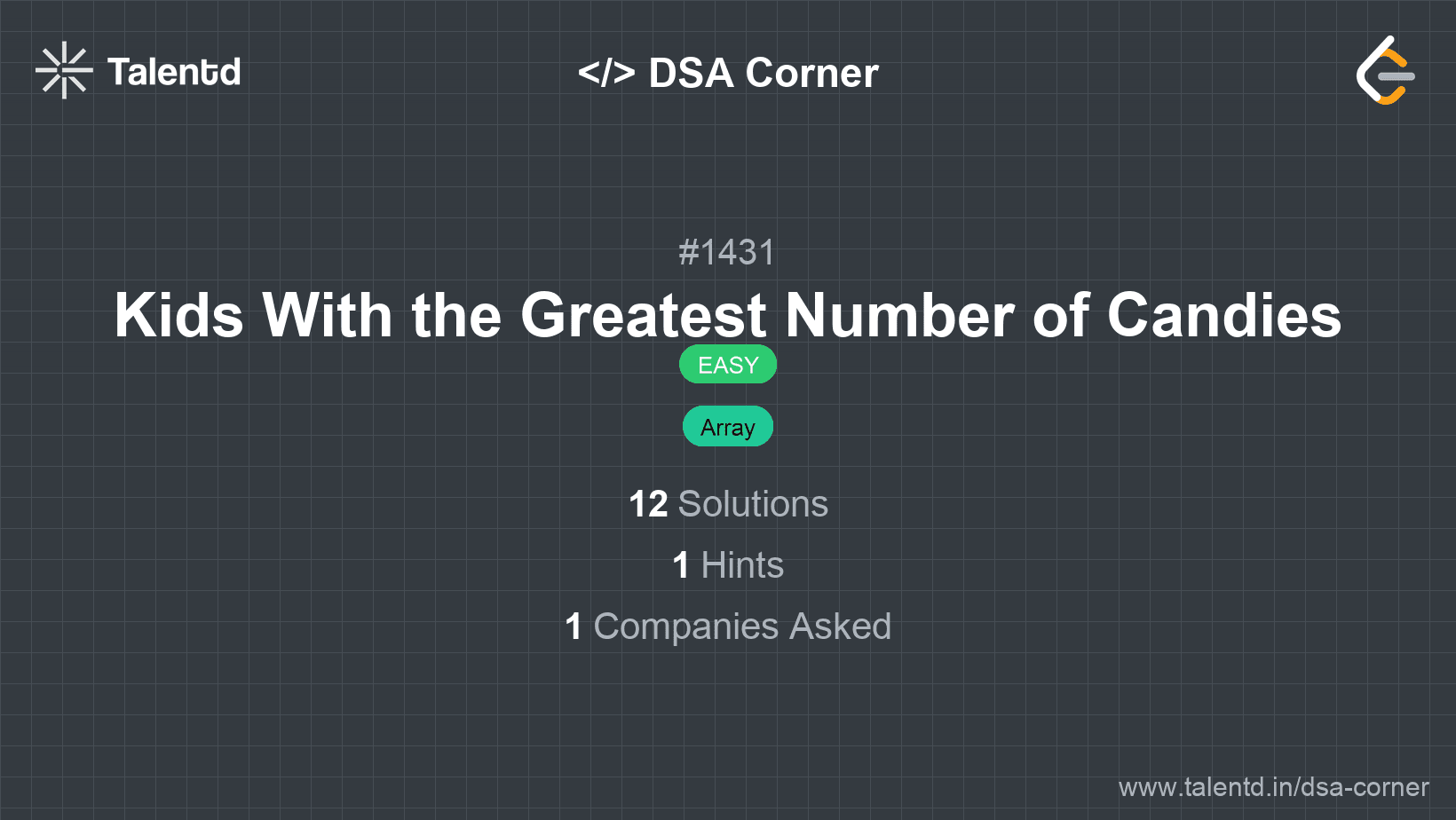
Sponsored
Sponsored
This approach iterates through each kid's candies and checks if adding the extraCandies to their current candies makes them equal to or greater than the maximum number of candies present initially. It involves finding the maximum candies first and then performing this computation.
Time Complexity: O(n), where n is the number of kids.
Space Complexity: O(1), not counting the output array.
1function kidsWithCandies(candies, extraCandies) {
2 let maxCandies = Math.max(...candies);
3 return candies.map(candy => candy + extraCandies >= maxCandies);
4}The solution determines the maximum number of candies using Math.max combined with the spread operator. It then uses map to create a new array based on the condition checking if each kid's candies with extras meet or exceed the maximum found.
This approach optimizes the process by combining the finding of the max candies and constructing the result array into a single pass by keeping track of the maximum with conditional updates.
Time Complexity: O(n)
Space Complexity: O(1) aside from the result.
1
std::vector<bool> kidsWithCandies(std::vector<int>& candies, int extraCandies) {
int maxCandies = *max_element(candies.begin(), candies.end());
for (int i = 0; i < candies.size(); ++i) {
candies[i] = (candies[i] + extraCandies >= maxCandies);
}
return std::vector<bool>(candies.begin(), candies.end());
}This C++ solution leverages the STL to calculate the max candies and uses a loop to overwrite the current candies values with boolean results based on the condition check.